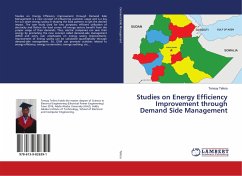Energy demand, and in particular electricity demand in India has been growing at a very rapid rate over the last decade. Currently, the electricity sector is characterized by chronic power shortages and poor power quality. With demand exceeding supply, severe peak and energy shortages continue to plague the sector. While the government opened up the power generation sector to private investments in 1991, the State Electricity Boards (SEBs) continue to be the main agencies responsible for the generation and supply of electricity in India today. The elementary problem being faced by the power sector is the poor financial conditions of these State Electricity Boards. This has resulted in inadequate investment in additional generation capacity, which is likely to further exacerbate the existing gap between power supply and demand. Clearly, there is a large role and potential for Demand Side Management (DSM) programmes in India.
Bitte wählen Sie Ihr Anliegen aus.
Rechnungen
Retourenschein anfordern
Bestellstatus
Storno








